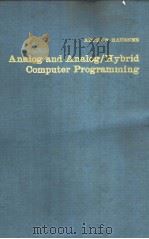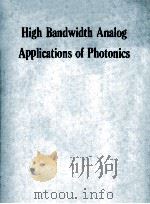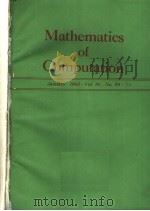《PRINCIPLES OF ANALOG COMPUTATION》
| 作者 | 编者 |
|---|---|
| 出版 | 未查询到或未知 |
| 参考页数 | 234 |
| 出版时间 | 没有确切时间的资料 目录预览 |
| ISBN号 | 无 — 求助条款 |
| PDF编号 | 811685588(仅供预览,未存储实际文件) |
| 求助格式 | 扫描PDF(若分多册发行,每次仅能受理1册) |
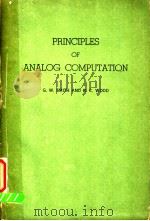
Chapter 1.Major Components of the Analog Computer1
1-1.Introduction1
1-2.Operational Amplifiers1
1-3.Potentiometers6
1-4.The Servomultiplier8
1-5.The Pulse-height Pulse-width Multiplier11
1-6.Additional Methods for Electronic Multiplication13
1-7.The Servo Resolver15
1-8.Output Devices or Recorders17
1-9.Problem Boards22
Chapter 2.Problem Planning and Programming29
2-1.Introduction29
2-2.Standard Symbols29
2-3.Methods of Diagramming31
2-4.Computer Work Sheets32
2-5.Scale Factors32
2-6.Problem Preparation for the Analog Computer34
2-7.The Need for Time Transformation41
2-8.Making the Time Transformation42
2-9.Programming Transfer Functions46
2-10.Simulation of a High-order Transfer Function.Which Requires Time Transformation47
2-11.Programming a Problem Which Requires Multiplication49
2-12.Generalized Integration52
2-13.Programming a Set of Simultaneous Differential Equations54
2-14.Programming a Problem Involving Trigonometric Operations57
2-15.Programming a Problem Involving Simultaneous Nonlinear Differential Equations59
Chapter 3.Simulation of Linear Systems64
3-1.Introduction64
3-2.Block-diagram Notation65
3-3.Theory and Application of Bode Plots66
3-4.Simulation of Linear Systems by the Direct Solution of the Differential Equations76
3-5.Analysis of a Five-impedance Network91
3-6.Network Synthesis Using an Impedance Table97
3-7.Comparison of Methods109
3-8.The Simulation of Dead Time112
Chapter 4.The Use of Diodes in Analog Computations125
4-1.Introduction125
4-2.Limiting the Summing Amplifier126
4-3.Limiting an Integrator136
4-4.Simulation of Dead Space137
4-5.Hysteresis and Backlash139
4-6.Absolute Value142
4-7.The Comparator and Its Applications143
4-8.The Generation of Simple Arbitrary Functions146
4-9.Simulation of an Accelerometer148
4-10.The Idealized Diode Circuit and Its Application151
Chapter 5.Function Relays156
5-1.Introduction156
5-2.The Relay Comparator156
5-3.The Use of Relays in Computer Circuits157
5-4.A Comparison of Relay and Diode Switching Methods161
Chapter 6.Implicit-function Techniques163
6-1.Introduction163
6-2.The Use of High-gain Amplifiers for Implicit Computation163
6-3.The Division Circuit164
6-4.The Square-root Circuit171
6-5.The Inverse-sine Function175
6-6.The Arctangent Circuit177
6-7.Stability of Implicit-function Circuits179
6-8.Analysis of an Indeterminant Case180
Chapter 7.Arbitrary-function Generators187
7-1.Introduction187
7-2.Curve-follower Function Generator Using Resistanes Elements188
7-3.Photoformer-type Curve Following Function Generator189
7-4.Tapped-potentiometer Functiou Generators190
7-5.Diode Function Generators193
7-6.Special-purpose Function Generators198
7-7.Generation of Functions of Two Variables202
7-8.Improving the Accuracy of Diode Function Generators208
Chapter 3.General Theory of Operation of Computer Components214
8-1.Introduction214
8-2.The D-C Operational Amplifier214
8-3.Computer Controi Circuits223
8-4.Automatic Checking of Problem Setup227
8-5.Automatic Time-scale Checking228
8-6.Automatic-setup Procedures229
Index231
《PRINCIPLES OF ANALOG COMPUTATION》由于是年代较久的资料都绝版了,几乎不可能购买到实物。如果大家为了学习确实需要,可向博主求助其电子版PDF文件。对合法合规的求助,我会当即受理并将下载地址发送给你。
高度相关资料
-
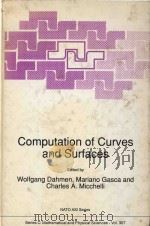
- Computation of curves and surfaces
- 1990 Kluwer Academic
-
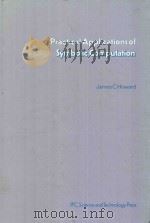
- PRACTICAL APPLICATIONS OF SYMBOLIC COMPUTATION
- 1979 IPC SCIENCE AND TECHNOLOGY PRESS
-
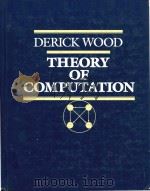
- The Theory of Computation
- 1987 John Wiley & Sons
-
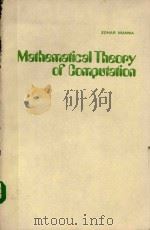
- MATHEMATICAL THEORY OF COMPUTATION
- 1974 MCGRAW-HILL BOOK COMPANY
-
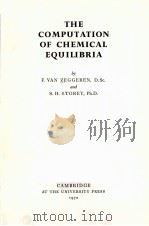
- THE COMPUTATION OF CHEMICAL EQUILIBRIA
- 1970 CAMBRIDGE AT THE UNIVERSITY PRESS
-

- ANALOG SIMULATION SOLUTION OF FIELD PROBLEMS
- 1958 MCGRAW-HILL BOOK COMPANY INC.
-
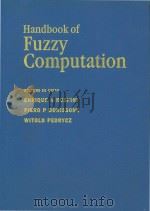
- Handbook of fuzzy computation
- 1998 Institute of Physics Pub
-
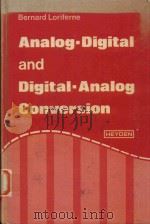
- ANALOG-DIGITAL AND DIGITAL-ANALOG CONVERSION
- 1981 HEYDEN
-
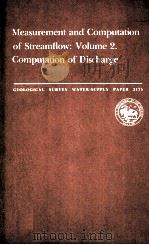
- Measurement and Computation of Streamflow:Volume2.Computation of Discharge
- 1982 UNITED STATES GOVERNMENT PRINTING OFFICE
-
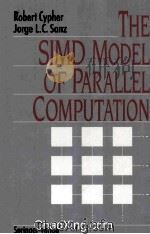
- The SIMD Model of Parallel Computation
- 1994 Springer-Verlag
-
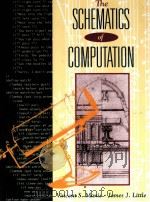
- THE SCHEMATICS OF COMPUTATION
- 1995 PRENTICE HALL
提示:百度云已更名为百度网盘(百度盘),天翼云盘、微盘下载地址……暂未提供。➥ PDF文字可复制化或转WORD
